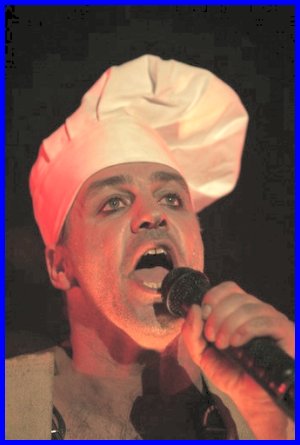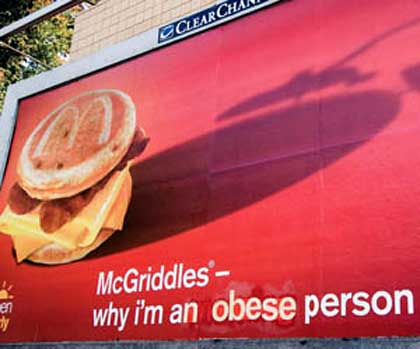
this is an upcoming exhibition at de brakke grond
It appears that they intend exhibiting Australian animals in cages in the exhibition space for the duration of the exhibition. I am curious as where these animals have been obtained and whether anyone is monitoring their accomodation requirements?
------------------------------------------
Datum: zaterdag 21.01.06 t/m zondag 26.02.06
Locatie: Witte Zaal en Expozaal
Wesley Meuris onderzoekt de effecten van architectuur op ons gedrag en spitst dit onderzoek toe op kooien. Deze weerspiegelen meestal de oorspronkelijke biotoop van hun bewoners. In zijn werk stelt Meuris vragen naar de gangbare conventies en het automatisme waarmee we met gestandaardiseerde architecturale ruimtes omgaan.
In Noctural cage for Australian Night Animals stelt Meuris - door het omdraaien van de activiteitsperiode van de nachtdieren - overdag een nachtelijke habitat tentoon waar vijf verschillende soorten dieren in worden samengebracht:
* Thylogale stigmatica Red Legged Pademelon Roodpootpademelon
* Macrodus lagotis Rabbit-eared Bandicoot Grote langoorbuideldas
* Petaurus breviceps Sugar Glider Noordelijke suiker-eekhoorn
* Podargus strigoides Tawny Frogmouth Uilnachtzwaluw
* Macroderma gigas Australian false vampire bat Australische spookvleermuis
Wesley Meuris (Lier, °77) volgde les aan de Sint-Lucas Hogeschool te Brussel en studeert dit jaar af aan de postgraduaatsopleiding aan het H.I.S.K. (Hoger Instituut voor Schone Kunsten) te Antwerpen.
-----------------------------------
translated by babelfish
Wesley Meuris examine the impact of architecture on our behaviour and pierce this research on cage. These generally reflect the original biotope of their occupants. In its work puts Meuris ask for the gangbare conventies and automation with which we handle standardised architectural spaces.
In Noctural cage for Australian Night Animals Meuris - by turning the activity period of the nocturnal animals - by day a nocturnal habitat tentoon states where five different types animals are brought together in:
* Thylogale stigmatica Red Legged Pademelon Roodpootpademelon
* Macrodus lagotis Rabbit-eared Bandicoot large one langoorbuideldas
* Petaurus breviceps Sugar Glider northern one sugar squirrel
* Podargus strigoides Tawny Frogmouth Uilnachtzwaluw
* Macroderma gigas Australian false vampire bat Australian phantom bat
Wesley Meuris (quadrant, °77) followed lesson to Sint-Lucas the college in Brussels and graduate this year to the mail graduate training to the H.I.S.K. (higher institute for clean arts) in Antwerp.
-------------------------------------------WESLEY MEURIS was born in Lier, Belgium in 1977. He lives and works in Antwerp. From 1995 to 1999 he was in the M.F.A. programme (Sculpture) at the Saint Lucas Hogeschool, Brussels. He had a guest studio in Düsseldorf from February to July 2001. In 2004 he was selected to work two years at the Higher Institute of Fine Arts, Antwerp.
Beginning with an interest in the interaction between architecture and human conditioned-behaviour, I became intrigued by the conditions that coalesced around the making of cages for animals. The implicit requisite is, of course, that the cages be 'livable' with respect to a particular animal, so that it may survive outside its usual habitat.
But moreimportant still in the construction of such cages, is the comfort that we (viewers) generally experience when we look at animals in captivity, most often in zoos. I consider the zoo as a control-domain in terms of the viewers vis-à-vis the observed animals, but the viewing public too is led into a controlled architecture.
Taking this as starting-point, I proceed to put together a system of zoological classification and so determinewhich cage is suitable for which animal. This classification is founded on my visual experience. Each cage that I design is coded according to the folowing criteria:
1. the nature/species of the animal;
2. size of the cage, with specifications such as: % water, type of ground structure...;
3. atmospheric conditions: temperature, humidity...;
4. care and feeding;
5. relationship between cage and public.
The artificial habitat is created according to elementary architectural principles: enclosure, inclination, door-openings, water-parts, steps, slopes and private spaces—these with tiles, sand and glass. Architecturally, a concensus is sought in the relationship between the animal, the cage, and the viewer.
more





















![[stencil government] stencil government](http://www.duncancumming.co.uk/photos/stencil0546.jpg)


